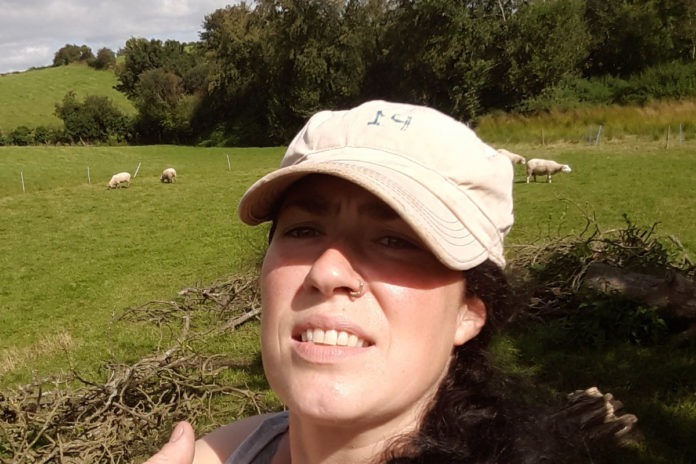In this week’s Farmer’s Diary, Clodagh Hughes discusses three “fairly severe” cases of blowfly strike.
Hello there! Last week, I missed a diary submission, and I have had a hectic couple of weeks with a few minor disasters here on my wee farm. Thankfully, all is under control now.
Let me start with the dreaded attack of the flies.
Blowfly strike
Although I have all my sheep and lambs treated against flystrike and I am regularly trimming any dirty butts, I still got hit with three fairly severe cases of strike in my lambs.
Even with me being vigilant, I still got caught out! The speed at which the damage takes place never fails to astound me.
As sheep are notoriously good at hiding pain and injury, it can be a pure mess by the time you discover a struck animal.
Briefly, what occurs is; the Green bottle fly (or Lucilia sericata if we want to go all posh!) lays hundreds of eggs onto areas of soiled fleece.
Within 24 hours, these eggs will have hatched into tiny larvae. As they progress onto the next stage of development, they feed on the sheep’s skin, causing severe damage.
At this time of year, and in these wet and humid conditions, it only takes 36 hours after the initial egg-laying for significant wounds to form.
The maggots burrow into the skin and are technically eating the animal alive! It is a horrific affliction and is a massive animal welfare issue among animals of any type, humans even, if a wound was attacked and neglected.
I have come across an odd social media blurb saying, “it’s cruel to shear sheep”.
Now I am not getting into the bones of these ‘statements’, but suffice it to say, I will happily show anyone the effects of what can happen to a sheep underneath its fleece when flystrike occurs.
The suffering the animal goes through is absolutely cruel, and not only that, how you have to treat the affected animal.
How I treated the animals
Firstly you clip away the fleece around the affected area as this lets much-needed air at the site and also lets you access the dreaded parasites.
Then, you must physically remove every single maggot from the animal’s skin and fleece. They are small, and the same colour as the wool and can be in their hundreds!
Next, I bathe the area with a weak iodine solution. I can feel the animal’s relief as the cooling liquid soothes the wound. I have a veterinary medicinal skin spray I use on bad cuts and wounds such as this as it aids in the healing process and also acts as a skin barrier.
Also, I will cover the whole area liberally with an antibiotic spray, which helps ward off infection and speed up the healing process.
When caught and treated in time, the animal will make a full recovery. They have amazing healing qualities, and their wool will start to grow back within weeks. Sheep are pretty cool.
I knew I would not squeeze two weeks into one diary excerpt. Tune in next week, folks!

Further reading
Read more of Clodagh’s sheep farming updates.





